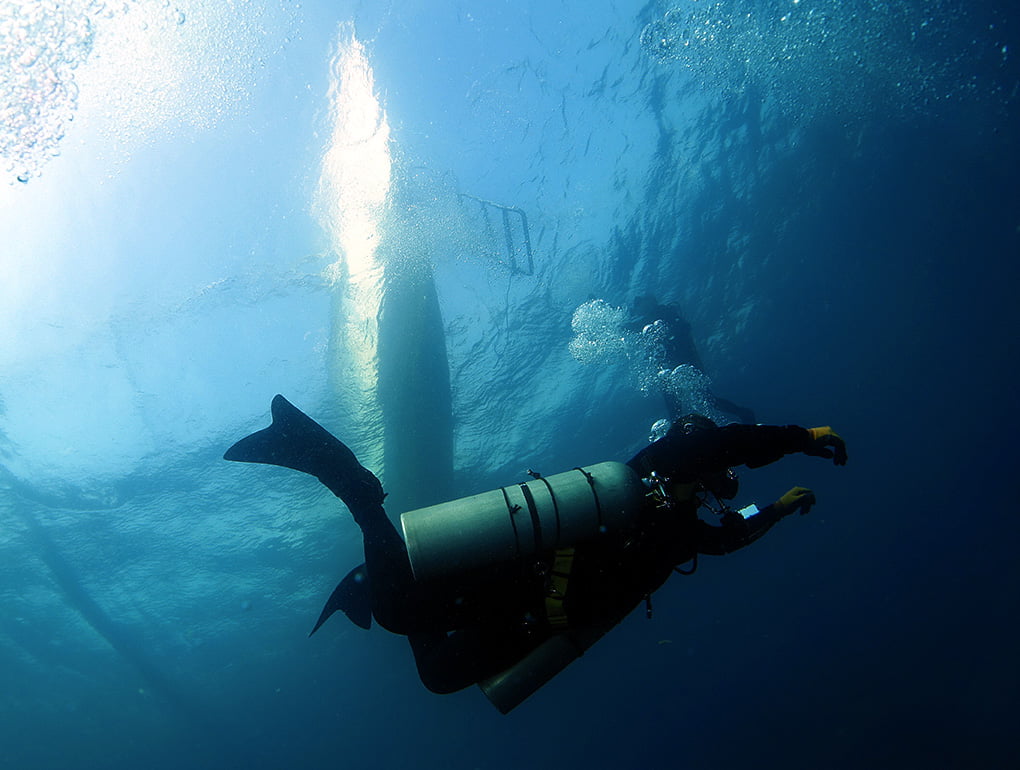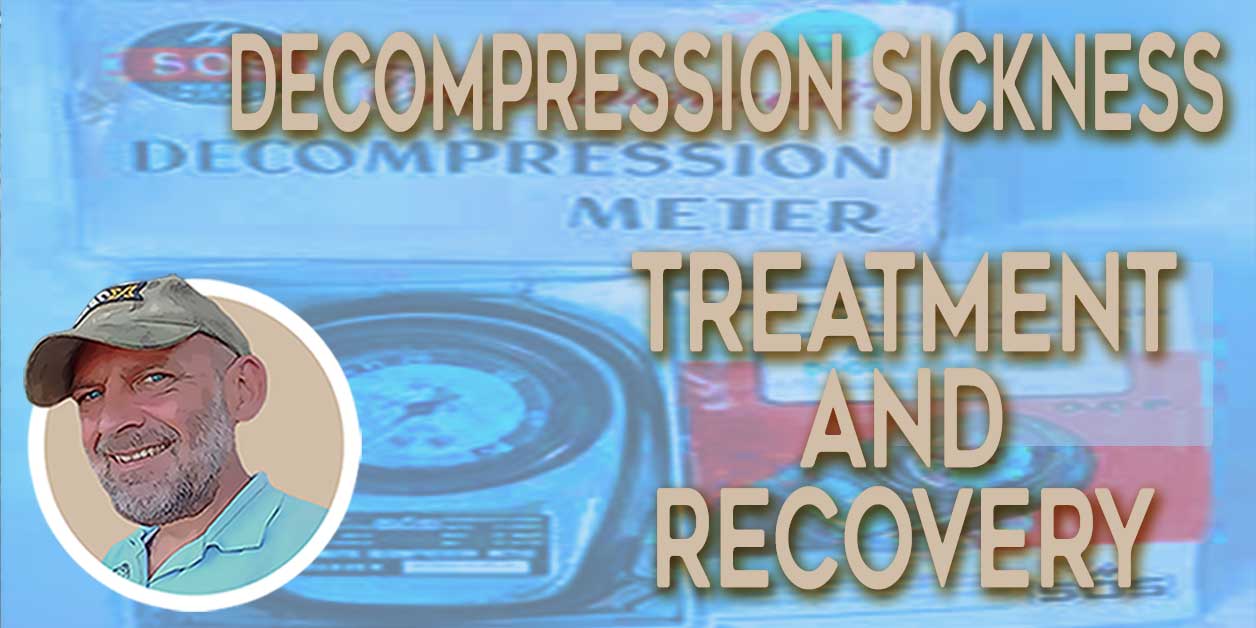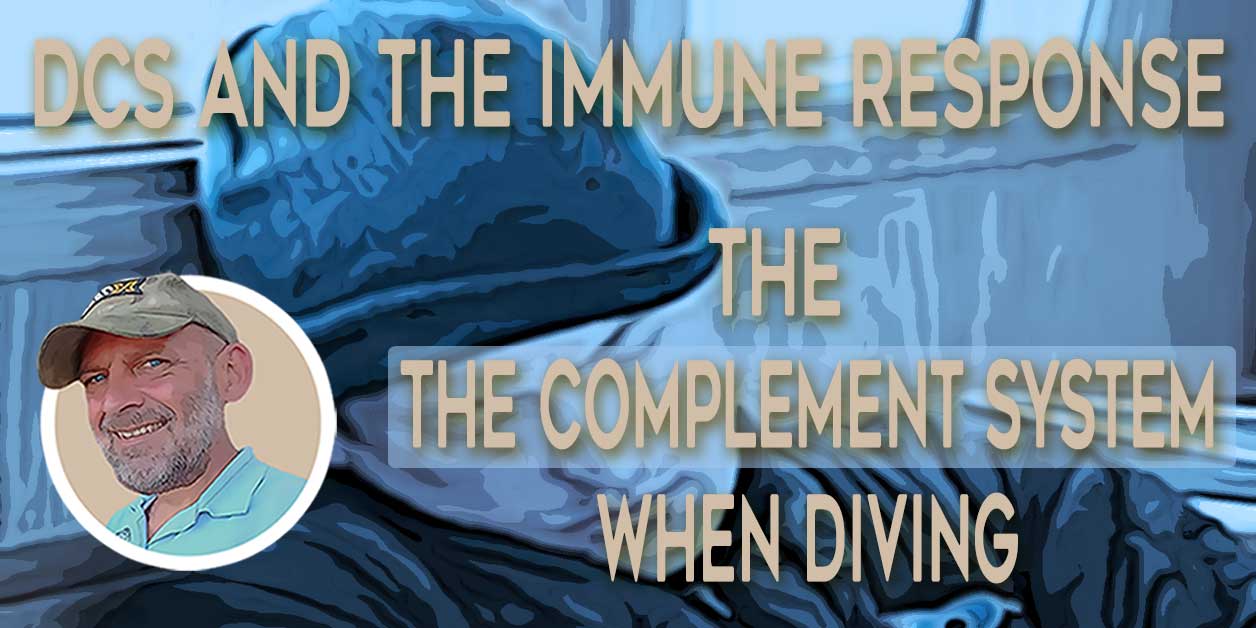Micro-Bubbles When Scuba Diving: Mild Bends And Sub-Clinical DCS
If you’re a scuba diver, you may have heard of decompression sickness (DCS), commonly known as “the bends”. But did you know that small bubbles form in your body during every dive ascent? These tiny bubbles are called micro-bubbles and are smaller than red blood cells. While they don’t cause physical injury, in sufficient numbers they can trigger an immune-response that leads to post-dive fatigue. That fatigue is known as ‘decompression stress’ and is considered a sub-clinical form of DSC.
This article explores what causes micro-bubbles and how they connect to sub-clinical DCS and decompression stress. I will explain how you perform diving ascents influences off-gassing efficiency and micro-bubble elimination. Keep reading to learn more about this poorly understood risk in scuba diving.
What are micro-bubbles?
All divers develop small bubbles in their body after all of their dives. These micro-bubbles are also called ‘silent bubbles’ or ‘micro-emboli’. However, these micro-bubbles are insufficiently large to cause us immediate physical injury.
These mico-bubbles form when the pressure surrounding us becomes lower than the pressure of nitrogen absorbed within our body during a dive. This difference in pressure is called supersaturation. A greater difference in pressure causes more bubbles to form.
The algorithm used in your dive computer calculates to prevent large bubbles from forming. In turn, this protects you from DCS injury. However, small bubbles, that don’t cause injury, are not a factor in most dive computer algorithms.
Decompression models used in dive tables and computers assign a maximum value (m-value) to ascent supersaturation. Consequently, this limit prevents micro-bubbles from growing to a size that causes clinically diagnoseable harm (symptomatic DCS).
Some modern decompression models, known as ‘bubble-models‘, also include calculations that reduce the number of fast tissue micro-bubbles. They do this by pausing ascent at a deeper depth. That alleviates post-dive symptoms of decompression stress, but the trade-off is that deeper stops cause more slow-tissue ongassing.

Ultimately, pausing an ascent with deeper safety stops can fix the micro-bubble problem. However, the diver absorbs more nitrogen because they stayed deeper for longer. Surfacing with a higher amount of nitrogen in the body causes more risk of DCS.
In comparable decompression ascents, bubble models cause more incidents of DCS than traditional dissolved gas models, such as Buhlmann ZHL-16.
As such, the process of addressing micro-bubbles can be a trade-off between what is best to remove nitrogen and reduce DCS risk, and what is best to prevent an excess of micro-bubbles from forming.
Factors known to influence off-gassing efficiency and micro-bubble elimination include:
- Ascent speed
- Ascent stops
- Dive profile
- Ascent gas selection
Micro-bubbles summarized
- All divers develop small bubbles in their body after dives, but they are insufficiently large to cause immediate physical injury.
- These micro-bubbles form due to supersaturation, which is the difference between the pressure surrounding us and the pressure of nitrogen absorbed in our body.
- Dive computers have algorithms that prevent large bubbles which DCS injury, but small bubbles are not a factor in most algorithms.
- Bubble-models include calculations that reduce the number of micro-bubbles by briefly pausing ascent at a deeper depth.
- However, bubble-models allow more nitrogen absorbtion which raises the risk of DCS.
- Factors that influence off-gassing efficiency and micro-bubble elimination include ascent speed, ascent stops, dive profile, and ascent gas selection.
What is sub-clinical DCS?
Whilst micro-bubbles are too small to cause DCS injury, they can have a physiological effect in large numbers. This is because your body will react to those micro-bubbles with an immune response. A greater number of bubbles causes a stronger reaction from your body.
When micro-bubbles trigger a strong immune response, you might observe the following symptoms:
- Post-dive fatigue
- Malaise
- Reduced vitality
- Drowsiness
These symptoms are called “sub-clinical DCS“. It is sub-clinical because the symptoms don’t meet the medical criteria to be diagnosed for treatment as DCS.
Medical science and sub-clinical DCS
“… “mild DCI” is harder to define. This is largely because bubbles form, and can be detected in the venous blood, following a significant proportion of dives that do not result in symptoms that would normally be labelled “DCI”. It is therefore hardly surprising that there can be a poorly defined boundary between wellness and mild DCI following diving. […] It is not infrequent for divers to report highly non-specific and vague symptoms of variable latency, such as mild evanescent aches and pains, fatigue, demotivation and headache”.
MANAGEMENT OF MILD OR MARGINAL DECOMPRESSION ILLNESS IN REMOTE LOCATIONS: AN INTRODUCTION TO THE PROBLEM. S.J.Mitchell Ph.D, D. J. Doolette, Ph.D. DAN Remote Workshop Proceedings
“Doppler monitoring has revealed the presence of gas phase bubbles in divers ascending even from relatively shallow dives. We have also all experienced symptoms such as headache and fatigue in the immediate post-dive phase which we have put down to overexertion on exiting the water etc. In more recent years, we have been told that these symptoms are those of subclinical DCI and we have lived with these, perhaps naively, thinking that because they are not associated with overt symptoms of DCI, they are not causing any damage and are nothing to worry about. However, enter the iceberg principle. Nine tenths of the damage may be invisible and cummulative”.
THE TROUBLE WITH BUBBLES. Richard Heads PhD. 9-90 Magazine: UK Diving in Depth
“Inappropriate fatigue is a clear-cut symptom of subclinical decompression illness. I’m not a technical diver, Lord knows; but I see a lot of these guys. I send them out with decompression tables and they tell me what happens. They use their fatigue, their feeling of well-being – we called it constitution yesterday – as a major item in judging whether their decompression was adequate.
The fact that they don’t have any joint pain or tingling or rash or anything is secondary. Their major thermometer as to whether they’ve been properly decompressed is how well they feel. And that has to do with the fatigue and inappropriate fatigue. So we have to keep this as a symptom, not as a side issue”.
MANAGEMENT OF MILD OR MARGINAL DECOMPRESSION ILLNESS IN REMOTE LOCATIONS: AN INTRODUCTION TO THE PROBLEM. Bill Hamilton in discussion. DAN Remoe Workshop Proceedings.
Long term medical issues from micro-bubbles
Whilst micro-bubbles don’t cause immediate physical injury, they may be responsible for long term health issues. Large numbers of tiny bubbles are believed to cause inflammatory damage to the endothilial tissues of the veinous system.
Additionally, brain lesions may be caused over repeated occurences of sub-clinical DCS. This is because white blood cells attempt to fight the micro-bubbles. As the bubbles disspitate, the resulting clots migrate through the body and many end up stuck in the brain.
Micro-bubbles and sub-clinical DCS
- Micro-bubbles have to reach a sufficient size before causing symptoms of DCS.
- A large quantity of micro-bubbles will cause an immune system response. This is known as sub-clinical DCS.
- Symptoms of sub-clinical DCS include post-dive fatigue, malaise, reduced vitality, and drowsiness.
- Sub-clinical DCS is difficult to define medically.
- Doppler ultrasound monitoring has revealed the presence of micro-bubbles in divers ascending from relatively shallow dives.
- Inexplicable post-dive fatigue is a clear symptom of sub-clinical DCS.
What is decompression stress?
Divers often refer to sub-clinical DCS as ‘decompression stress‘. Historically, the symptoms of sub-clinical DCS were used by technical divers to analyze the effectiveness of their decompression ascent profiles. More recently, decompression stress is measured by literally counting bubbles using Doppler ultrasound after diving.
“…we know that bubbles are probably present after most dives, so we don’t have to exceed an M-value to produce bubbles in the absence of DCS. […] Although an M-value may not have been exceeded, symptoms of decompression stress such as fatigue, malaise, drowsiness etc. could well be the result”.
THE TROUBLE WITH BUBBLES. Richard Heads PhD. 9-90 Magazine: UK Diving in Depth
How to avoid micro-bubbles when diving
There are a number of strategies that you can use to substantially reduce the number of micro-bubbles created in your body as you ascend. It is important to remember that addressing micro-bubbles is not necessarily the same as avoiding DCS.
- Use nitrox. One of the benefits of nitrox is that it helps to eliminate micro-bubbles that form as you ascend.
- Perform a deeper safety stop. Add an additional 1 minute safety stop at 9m (30ft) during your ascent from deeper recreational dives. This prevents the pressure difference from spiking quickly; which causes micro-bubbles.
- Stay at a consistent depth. Avoid ‘yo-yo’ and ‘see-saw’ dive profiles that frequently fluctuate in depth. Every change of pressure increases the production of micro-bubbles.
- Respect shallower dives. The biggest pressure change occurs at shallower depth. On shallow dives you don’t absorb much nitrogen, but depth fluctuations can nonethless cause a lot of micro-bubbles.
- Take longer surface intervals. On repetitive dives, you will have micro-bubbles in your body after surfacing. Allow more time for those bubbles to dissipate before returning to the water.
- Ascend very slowly from your safety stop. As the biggest change in pressure happens towards the surface, ascend from your safety stop very slowly. Aim for a maximum ascent rate of 3m (10ft) per minute. Some very experience divers opt to ascend at 1m (3ft) per minute whenever their dive has brought them close to a no-stop limit.
Understanding micro-bubbles on your scuba dives
In conclusion, micro-bubbles occur in the body of all divers after every dive, but they are usually too small to cause any physical harm. However, these sub-clinical micro-bubbles can still have an impact on the body, leading to post-dive fatigue, malaise, reduced vitality, and drowsiness.
Be aware of decompression stress, which indicates that you are having an immune system response to larger quantities of micro-bubbles.
To reduce the number of micro-bubbles, divers can pause their ascent with deep stops, use nitrox and avoid excess depth fluctuation on their dives.
Understand that factors such as ascent speed, safety stops, dive profile, and gas selection all affect the creation and elimination of micro-bubbles.
Overall, understanding micro-bubbles and decompression stress is crucial for all divers to ensure safe and enjoyable diving experiences.
Further reading on micro-bubbles and scuba diving
Tiny Bubbles, Big Trouble. by DAN, Diver magazine, 2021.
Micro Bubbles, Macro Problems: New Research Brings Possible Solutions to DCS Quandaries. by Reilly Fogarty, InDepth magazine, 2019.
Bubble Breakthroughs. by Megan May, University of North Carolina Research, 2019.
DAN Europe and Azoth Systems’ microbubble study. by Mark ‘Crowley’ Russell, Dive magazine, 2022.
Microbubble damage to the blood-brain barrier: relevance to decompression sickness. by B A Hills and P B James, Undersea Biomed Res, 1991.
Silent Bubbles, Silent Damage? Scientists debate the medical significance
of clinically silent bubbles in divers’ bloodstreams. by Samuel Shelanski M.D.
About The Author

Andy Davis is a RAID, PADI TecRec, ANDI, BSAC, and SSI-qualified independent technical diving instructor who specializes in teaching sidemount, trimix, and advanced wreck diving courses.
Currently residing in Subic Bay, Philippines; he has amassed more than 10,000 open-circuit and CCR dives over three decades of challenging diving across the globe.
Andy has published numerous diving magazine articles and designed advanced certification courses for several dive training agencies, He regularly tests and reviews new dive gear for scuba equipment manufacturers. Andy is currently writing a series of advanced diving books and creating a range of tech diving clothing and accessories.
Prior to becoming a professional technical diving educator in 2006, Andy was a commissioned officer in the Royal Air Force and has served in Iraq, Afghanistan, Belize, and Cyprus.
In 2023, Andy was named in the “Who’s Who of Sidemount” list by GUE InDepth Magazine.
Purchase my exclusive diving ebooks!
Micro-bubbles and scuba diving FAQ
Micro-bubbles, also known as silent bubbles, are created on every diving ascent. Smaller than red blood cells, they do not cause DCS injury, but can cause post-dive fatigue.
Micro-bubbles are believed to potentially cause brain lesions or damage the endothelial layer of veins with repeated exposures over time.
Micro-bubbles are smaller than red blood cells. They are typically between 0.5µm and 10µm in diameter.
Breathing nitrox helps eliminate bubbles on ascent. Additionally, a short additional safety stop at 9m (30ft) may reduce micro-bubbles after deeper dives. Also, avoid depth fluctuations when diving and ascend very slowly from your safety stop to the surface.
Micro-bubbles are detected with Doppler ultrasound equipment. First pioneered in 1968, technological advancements have made it very accurate and accessible to divers.
Micro-bubbles cause an immune system response that leads to post-dive fatigue. This is known as decompression stress or sub-clinical DCS.
Originally posted 2018-03-07 23:56:24.
















Hi Dean, you are welcome to share links to the article. However, the content is copyrighted and should not be replicated or distributed elsewhere.
Good morning.
My name is Dean, I own and operate a dive charter business in NC, with your permission I would like to share your information (articles)
with my customers on my website.
If approved what is the best method to share?
Thank you for your time!
Have a blessed day!
Dean